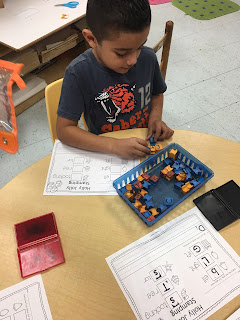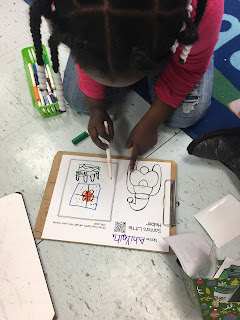Adopting a strengths-based
perspective of education is a perspective that I feel very strongly about. In education, I want to work with families to
get the best overall help and care that they need for their family. According to Pattoni, (2012) “strengths-based
practice is a collaborative process between the person supported by services
and those supporting them, allowing them to work together to determine an
outcome that draws on the person's strengths and assets (p.4). The standards of
practice are:
1. Goal orientation: Strengths-based
practice is goal oriented. The central and most crucial element of any approach
is the extent to which people themselves set goals they would like to achieve in
their lives.
2. Strengths assessment: The primary focus is
not on problems or deficits, and the individual is supported to recognize the
inherent resources they have at their disposal which they can use to counteract
any difficulty or condition.
3. Resources from the
environment:
Strengths proponents believe that in every environment there are individuals,
associations, groups and institutions who have something to give, that others
may find useful, and that it may be the practitioner's role to enable links to
these resources.
4. Explicit methods are used
for identifying client and environmental strengths for goal attainment: These methods will be
different for each of the strengths-based approaches. For example, in
solution-focused therapy clients will be assisted to set goals before the
identification of strengths, whilst in strengths-based case management,
individuals will go through a specific 'strengths assessment'.
5. The relationship is
hope-inducing:
A strengths-based approach aims to increase the hopefulness of the client.
Further, hope can be realized through strengthened relationships with people,
communities and culture.
6. Meaningful choice: Strengths proponents
highlight a collaborative stance where people are experts in their own lives
and the practitioner's role is to increase and explain choices and encourage
people to make their own decisions and informed choices. (Pattoni, 2012, p.5)
As an early childhood educator, I want to be an advocate
of strengths-based approaches to learning with my students and their
families. The literature, as stated in
Pattoni’s work (2012), states that, “personal strengths are associated with
academic success, self-determination, and life success” (p.10). I want everyone
involved to benefit. I want parents to
feel successful when they get the help that is needed and feel like they are
capable parents. I also want my students
to reach their full potential.
Strengths-based practice is important to me because I
have had to deal with different networks in the past to get adequate food,
clothing, shelter, and mental care for families. When a person doesn’t have anywhere to go,
they have no idea who to turn to. I had
to reach out and help in any way possible.
I wanted what was best for my student and his family. I reached out to the Department of Family and
Children Services, the Housing Authority, the local Food Bank, and the Mental
Health Agency getting the materials that the mother needed in order to be a
successful parent. The network of people
involved were very helpful, and the mother was grateful and appreciative. The students school success changed
dramatically after everything was in place.
It was extremely rewarding!
Questions of calls for support from colleagues:
·
What
agencies would you call on?
·
Do
you think strengths-based practice is appropriate?
·
How
would you help families? To what extent?
References
Pattoni, L. (2012). Strengths-based
approaches for working with individuals. Retrieved from https://www.iriss.org.uk/sites/default/files/iriss-insight-16.pdf

































